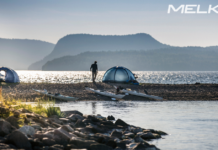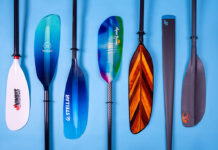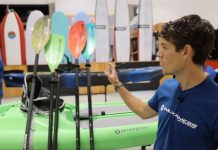More than any other piece of equipment you buy, your kayak paddle is your direct connection to the water. Deceptively simple, paddles are in fact marvels of physics and engineering.
Different kayak paddle shapes
Material, weight, shaft design and ferrule systems are certainly important factors, but it is the shape of the blades that dictates how the paddle performs stroke after stroke. Use this guide to decide which shape is right for you.
High angle kayak paddles
When paddle-makers classify their go sticks as high-or low-angle, they are referring to how the paddle shaft is held during a forward stroke.
Holding the kayak paddle shaft more vertically (high angle) delivers a powerful stroke that’s well suited to bursts of speed on calm water or in surf zones—think racing, surf kayaking and rough-water play. Blades designed for high angle paddling are shorter and broader for fast, nimble strokes. Since the paddler’s top arm is held higher (typically between chin and eyes), high angle paddling can feel more demanding than low angle.
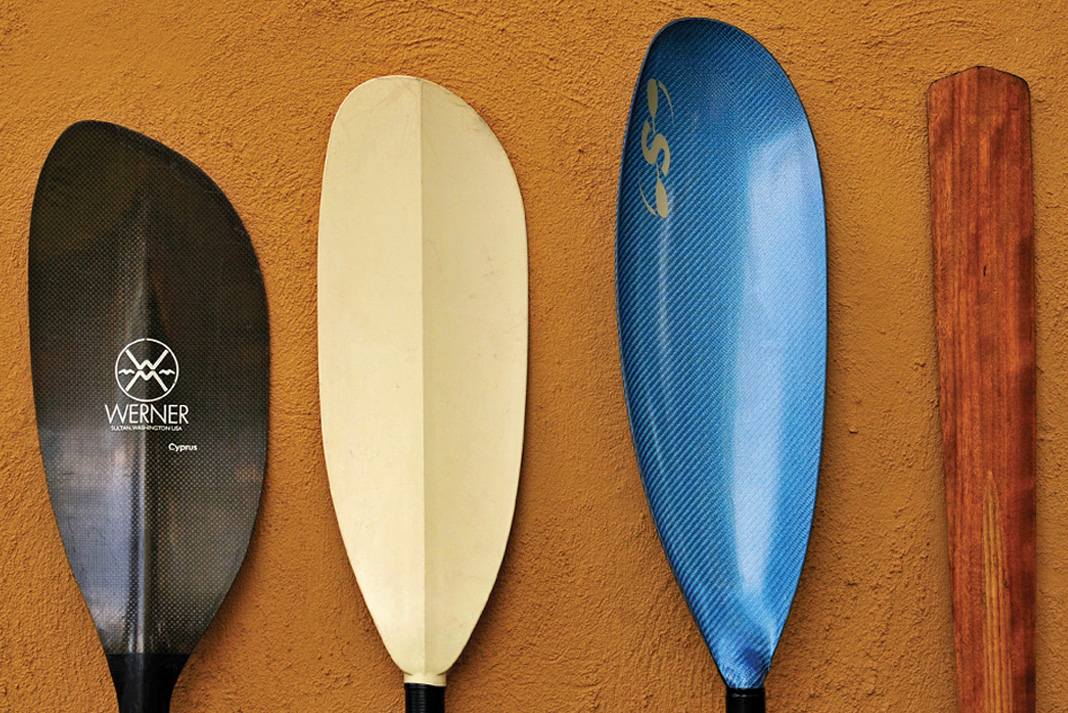
Low angle kayak paddles
The longer, skinnier blades designed for low angle paddling take their cues from traditional, Greenland-style paddles. Holding the paddle shaft closer to horizontal (low angle), with the paddler’s top hand just above the front deck, minimizes wind-resistance and makes for a low-impact stroke that is easy to maintain on long tours.
Both low-and high-angle blades are asymmetrical—the top edge is slightly longer to prevent the blade from twisting and fluttering as it moves through the water.
Wing paddle
Wing blades evolved among competitive race kayakers. They are ideally suited to paddlers who are focused on going forward, fast. Like an airplane wing, the kayak blade creates a lift on the backside of its scooped power face.
This increases the efficiency of your forward stroke by five to 10 percent over a conventional kayak paddle. You can actually take fewer strokes per minute without losing speed. The deep scoop of a wing blade necessitates a near-vertical stroke and lots of torso rotation. Casual paddlers trying to use a more relaxed, low-angle style will find it feels too slicey.
Greenland kayak paddles
The millennia-old design of Greenland kayak blades resembles an airplane propeller and applies the same principles to deliver surprisingly powerful propulsion. The kayak paddle can be held low in your lap for relaxed touring or more vertical for sprinting. The paddler may walk his or her hands along the shaft and narrow blades while stroking to gain traction or reach.
Touring with a Greenland paddle is like pedaling your bike in an easy gear: high cadence yet low impact. The buoyant, symmetrical blades are also especially well suited to rolling.
If you’re not first, you’re the last kayak paddle chosen. Feature Photo: Virginia Marshall
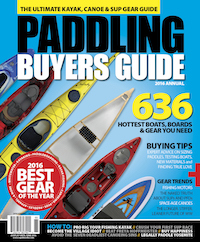 This article originally appeared in the 2016 Paddling Buyer’s Guide issue.
This article originally appeared in the 2016 Paddling Buyer’s Guide issue.
Subscribe to Paddling Magazine and get 25 years of digital magazine archives including our legacy titles: Rapid, Adventure Kayak and Canoeroots.





